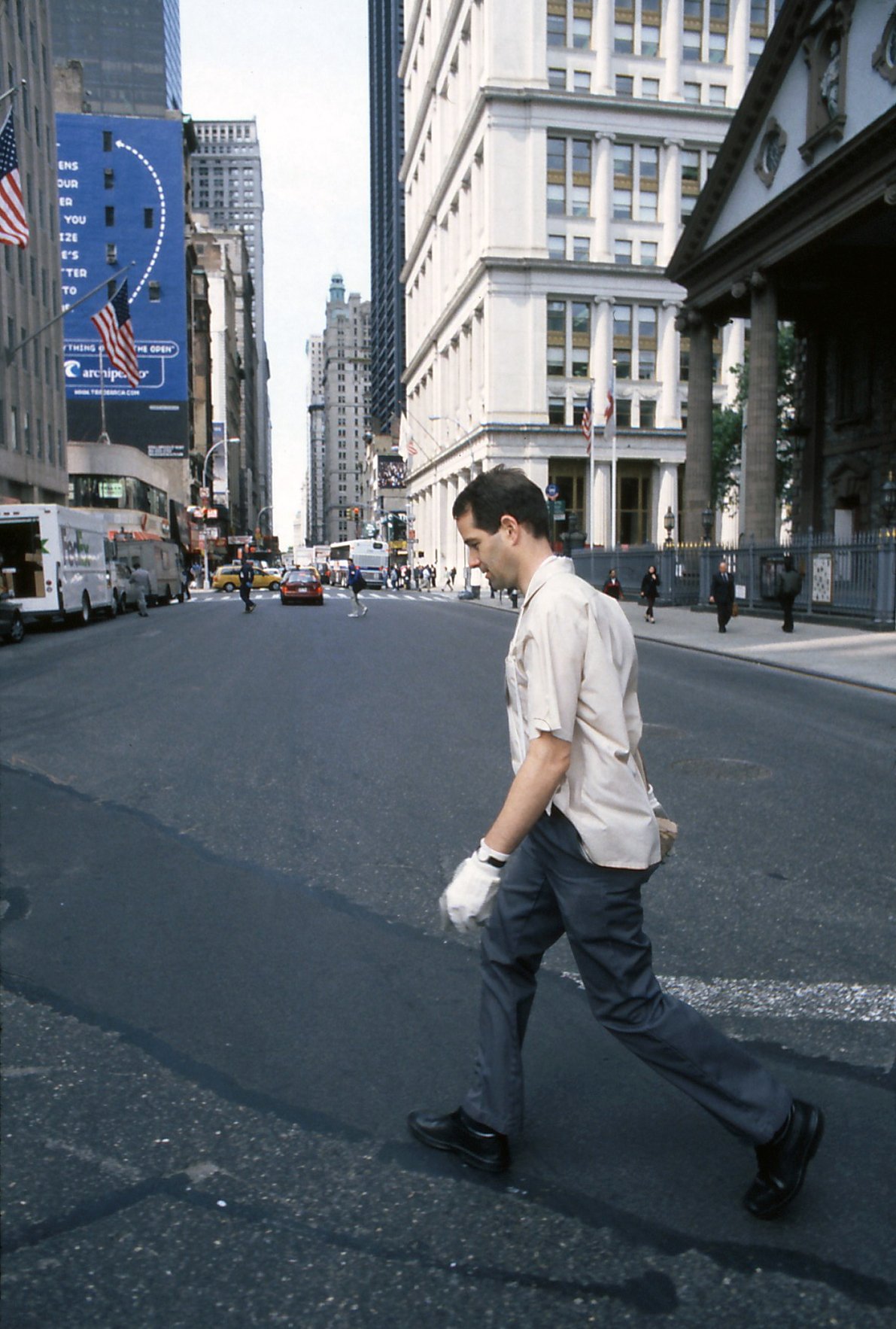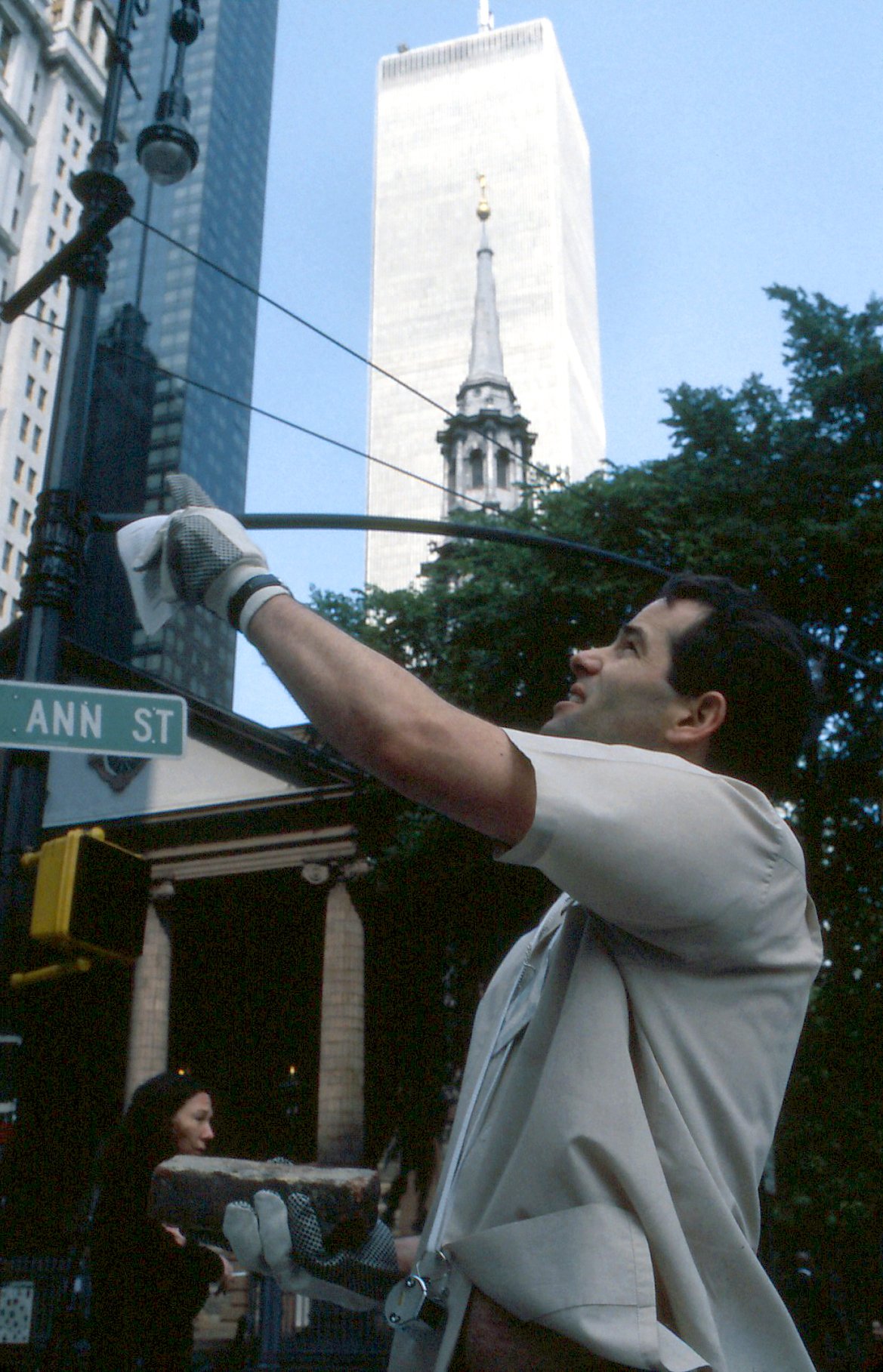Brick Man
“Consider, then, the figure of the laborer caught within the rules of circulation of variable capital....”
David Harvey, Spaces of Hope, 2000, p.113.
In May of 2001, I recreated P.T. Barnum’s 1860s era Brick Man advertising stunt by rotating bricks around the intersection of Broadway and Ann Street in Manhattan for one full 9-to-5 workday (184 circuits, 736 exchanges). The original Barnum performance’s lively and clever form of commercial speech was designed to draw an audience into his American Museum on the southeast corner of the intersection. Barnum wanted to show that he could create value out of thin air by making money from “nonsense” labor.
To do this Barnum hired an unemployed worker to place bricks on each of the four corners of the intersection in front of his Museum. According to his autobiography, Barnum then commanded his Brick Man “with the fifth brick in hand, [to] take a rapid march from one point to the other, making the circuit, exchanging [his] brick at every point.” As crowds would form to see what the trickster Barnum could be up to, his Brick Man would enter the Museum each hour with dozens of paying customers following behind him – and Barnum’s point was “proved.”
As an artist engaged in the creation of “intangible” value through the use of commercially unproductive labor, I sensed an affinity with Barnum’s proto-dada shenanigans. My goal, instead, was to use my own artistic practice to create an artist’s micro-model of classic liberal economic practice - the closed circuit of capital – and to make that model a crucial first step towards examining the mechanisms that shape our current system of free-market capitalism. As in Barnum’s original stunt, the bricks became physical stand-ins for human labor, for the potential of that labor to build the world anew, and for money itself.
Related Project:
-

Passerby - “Let me ask you this: Eighty percent of all raw material used in production today comes off of the continent of Africa. Yet we don’t have one world-class African nation. How does your ‘brick’ scenario relate to that problem?”
-

Sandwich Board Man - “Aren’t you tired of carrying those bricks around all day?”
PW - “Well, aren’t you tired of handing out those flyers all day, too?”
Sandwich Board Man - “Yes, but I’m getting paid to do it.”
-

Building Maintenance Man - “I tucked it right there behind the trash can. I don’t want anyone tripping on this brick.”
-

PW - “I’m using my body to try to physically understand how money and capital circulate in our economy and how human labor is caught up in this circulation.”
Acknowledgements
The Brick Man performance was funded in part by an Independent Project Grant from Artists Space and my thanks go out to that organization. Photographer Nick Katz took wonderful large format photos, photographer Joe Tabacca took a great set of slides and Roberto Guerra shot fantastic video footage of which I have yet to make appropriate use. Their help was immense.
Most special thanks goes to Deidre Hoguet to whom I am deeply and persistently indebted and without whom this project could not have come into being. Crucial and final thanks go out to my daughter Emily Walsh.
[Image] "The Great Brick Advertisement: Barnum's Brick Man draws a crowd, circa 1860," from P.T.Barnum's book Dollars and Sense; or How to Get On. The Whole Secret in a Nutshell, 1890.























